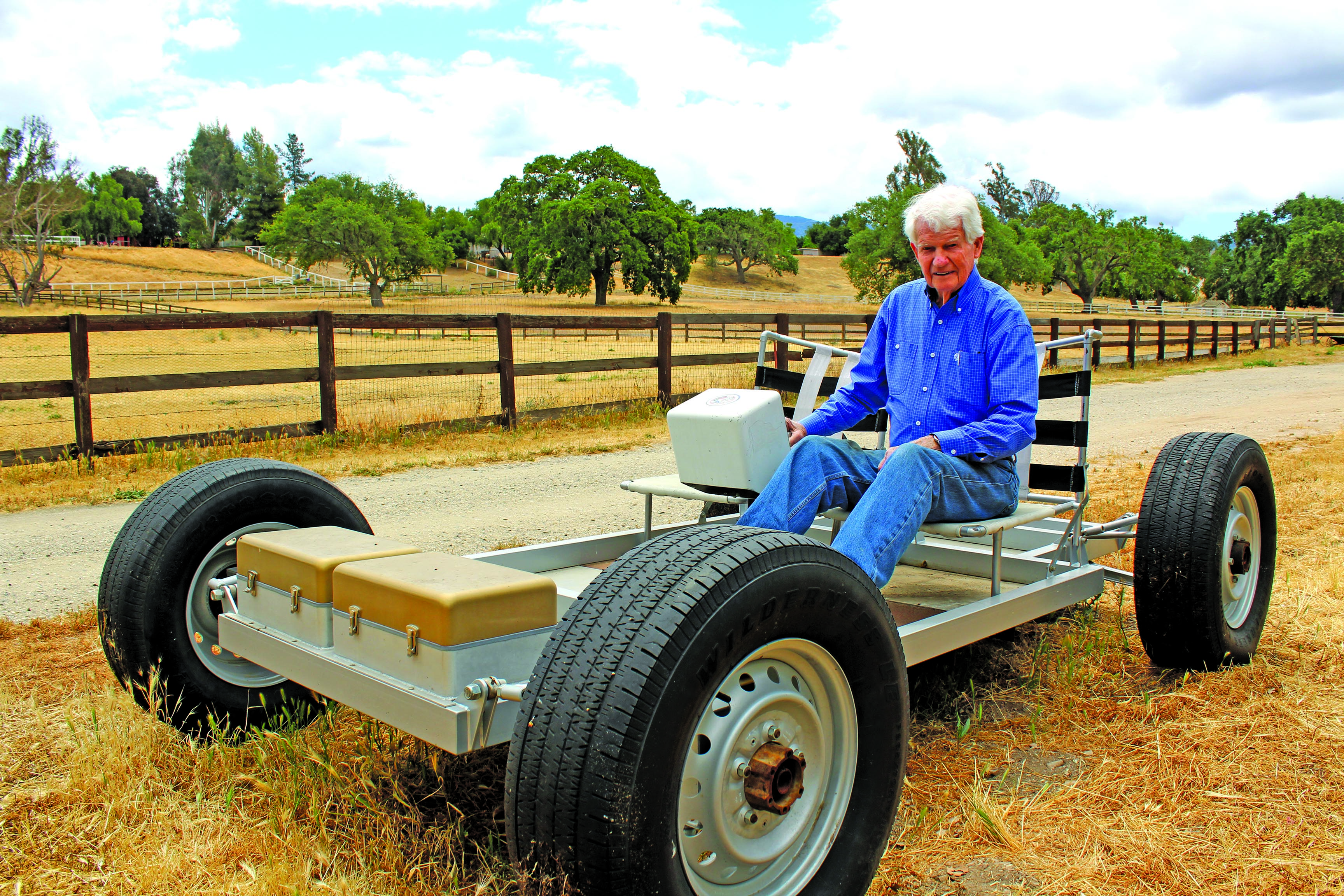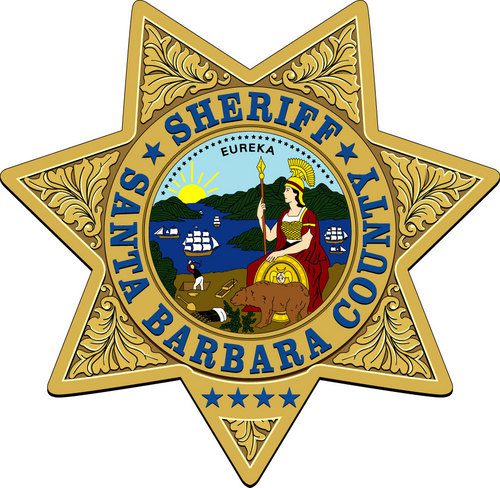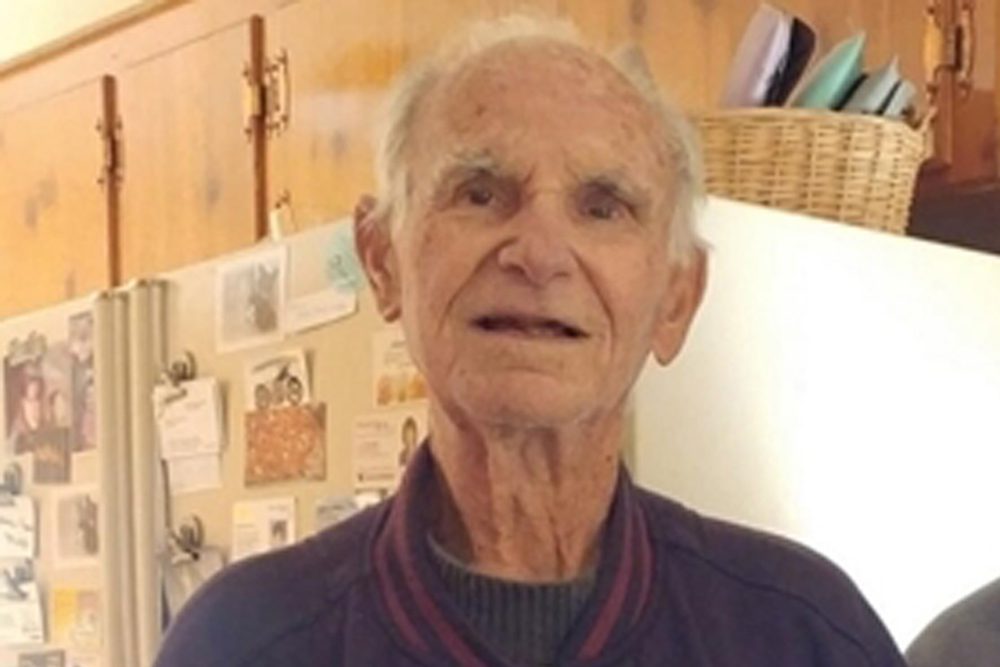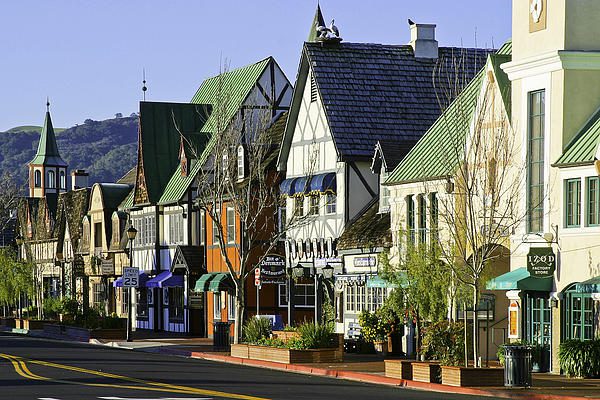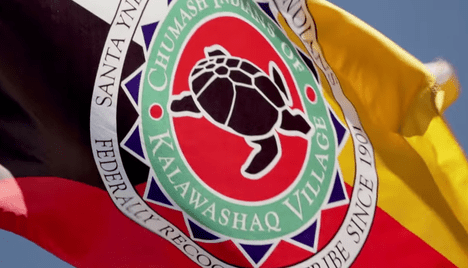By Raiza Giorgi
publisher@santaynezvalleystar.com
Rutledge “Putty” Mills of Santa Ynez has a special affinity for space travel and a special pride in his country.
After serving in World War II, he was directly involved with NASA’s Apollo missions, training astronauts after building the prototype of the Lunar Rover for the Apollo 17 mission in 1972.
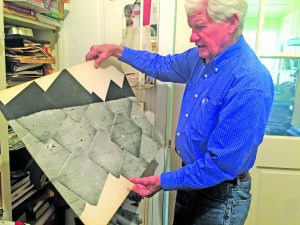
Mills shows pictures of the moon that were taken during test landings of unmanned rockets.
This year, he and his wife Carol will be the grand marshals for the Fourth of July Parade through Solvang.
“The choice of Putty and Carol was easy. They represent a local tie to the past of America’s Greatest Generation and their sacrifices and innovation, and the current generation that has continued the incredible technological advances to further our exploration of space,” said Steve Palmer of the Solvang Breakfast Rotary Club, which organizes the parade.
“We were so honored to be chosen as the grand marshals. This holiday is the most important, as we get to take a day and honor the people that created this great country, and those over the years that have improved it,” Mills said.
While looking back at the age of 96, he also looks forward.
“I look up at the sky and think out of all the millions of planets in the universe, how can we be the only life forms. It seems to me that there very well could be other versions of life, and I wonder what they are,” Mills said.
He also is amazed that the country has gone in a matter of 50 years from putting a man on the moon to talking about the possibilities of putting someone on Mars.
This year is the 50th anniversary of the Apollo 11 mission that first landed on the moon, when astronaut Neil Armstrong said those famous words, “That’s one small step for man, one giant leap for mankind.”
Armstrong, Buzz Aldrin and Michael Collins launched from the Kennedy Space Center on the morning of July 16, 1969, and four days later Armstrong set his foot on the moon. More than half a billion people were watching on television, according to NASA.
Aldrin soon joined him and uttered his simple but powerful description of the lunar surface: “magnificent desolation.” Then they explored the surface for two and a half hours, collecting samples and taking photographs.
The pair left behind an American flag, a patch honoring the fallen Apollo 1 crew, and a plaque on one of the Eagle lander’s legs. It reads, “Here men from the planet Earth first set foot upon the moon. July 1969 A.D. We came in peace for all mankind
But before the three Americans could land on the moon, other Americans had to plan, experiment and test new technology for years.
As a part of the development team of the Lunar Rover Module, Mills had to overcome extraordinary engineering challenges and exercise creative ingenuity to solve a multitude of known and unknown variables to create a vehicle for exploration of the moon’s surface, Palmer added.
One of the two prototypes Mills built is sitting in his barn at his home in Santa Ynez. He trailered it in last year’s Fourth of July Parade, and he is hoping to have it up and running for his year’s parade.
He also knows that in today’s world of rapidly advancing technology, young people are often unimpressed when they see his rover prototype.
“Armstrong was right when he said it was the beginning of a new age. I just am so honored to have been a part of history,” Mills said.
Mills was born in the suburbs of Philadelphia in 1923 and remembers making the long trek across the country after his parents decided to opt for warmer weather and moved to Santa Barbara on the advice of a friend.
When he graduated from Santa Barbara High School during World War II, Mills applied to be a fighter pilot. At the time, most kids idolized fighter pilots and Mills was ready to take the two-day test to become one of them.
After his tour was over, Mills was assigned to landing test shuttles on the moon with Saturn V rockets. It took 10 tries until one landed.
“During the flight, the rocket took pictures that were sent back,” Mills said as he showed the original photographs from the project.
When the idea of the moon rover project was proposed, a design by Boeing won. Then it was subcontracted to SB Research of Goleta. Mills ended up moving to Flagstaff, where the rover testing would be done on rocky desert terrain that was similar to the surface of the moon.
He worked closely with Gene Shoemaker, who was a renowned geologist and astronomer who trained the astronauts for their geological activities.
As Mills was taking the designs from Boeing and creating the prototypes, they estimated the costs of building it to be near half a million dollars.
“Being a conservative man … I put together most of the supplies from my surplus military catalogue,” Mills said.
“I built two of them that the astronauts trained with, with surplus military supplies that cost about $2,000 each. NASA paid more than $40 million for four rovers that went up,” Mills said, proud that he had saved the government so much money on the prototypes.
With a 90-day turn-around for the prototypes, he got them built in 89 days, he laughed. He also stayed to train astronauts Gene Cernan, Harrison Schmitt, Jim Irwin and Dave Scott to drive it.
The batteries to power the electric vehicle had to be made of silver zinc, which could stand up to extreme conditions. Everyday lead-based batteries would not work in extreme cold. Mills also made gear reductions because the rover could travel only at low speeds.
“The rover was in one-sixth of our gravity, which meant it had to go really slow in order to stay on the surface,” he said.
Thinking back over his time and influence on space travel, Mills said he was proud to be called for the assignments. As a kid who never graduated from college, he is a self-taught engineer and still studies 40 hours a week.
He’s also proud of his country.
“I can remember being a kid and loving the sight of the fireworks. I get this special feeling every time I see them, and I’m thankful we get to come together as a community and country to share it,” Mills said.
4th of July Schedule
Solvang residents and visitors will celebrate Independence Day on Thursday, July 4, with events being held throughout the day. Here is the schedule:
10 a.m. to 11 a.m. — Free concert by Santa Ynez Valley Wind Ensemble at the Solvang Park Gazebo.
11 a.m. — Fourth of July parade sponsored by the Solvang Rotary Club, featuring floats, horses, vehicles and more. The parade begins at Santa Ines Mission and then proceeds down Mission Drive, Fourth Place, Copenhagen Drive and Alisal Road, ending back at the mission.
Noon to 2 p.m. — A barbecue sponsored by Solvang Rotary Club will take place in Solvang Park. There will be hotdogs, hamburgers, linguiça and meal combos including chips and soda ranging from $5 to $7 per meal. The T-Bone Ramblers, a local band, will provide entertainment.
2 p.m. to 3 p.m. — Free concert by the Santa Ynez Valley Master Chorale featuring Americana, traditional and patriotic music at the Solvang Veterans Memorial Hall.
2 p.m. to 9:30 p.m. — Gates open at 2 p.m. at Mission Santa Inés for festivities that include food booths, wine and beer garden, and kids’ activities including a bounce castle and face-painting. Local performers will take the stage at 5 p.m. to provide entertainment until the fireworks begin.
Admission is $10 per adult and free for children ages 7 and under. Free admission will also be granted to active-duty military and their dependents with ID. Tickets can be purchased at the gate or in advance at Solvang Friendship House (880 Friendship Lane in Solvang) or Hometown Insurance (186 W. Highway 246 in Buellton).
9 p.m. to 9:30 p.m. —Fireworks show, sponsored by the Rotary Club of the Santa Ynez Valley, will take place in the fields at Mission Santa Ines.

